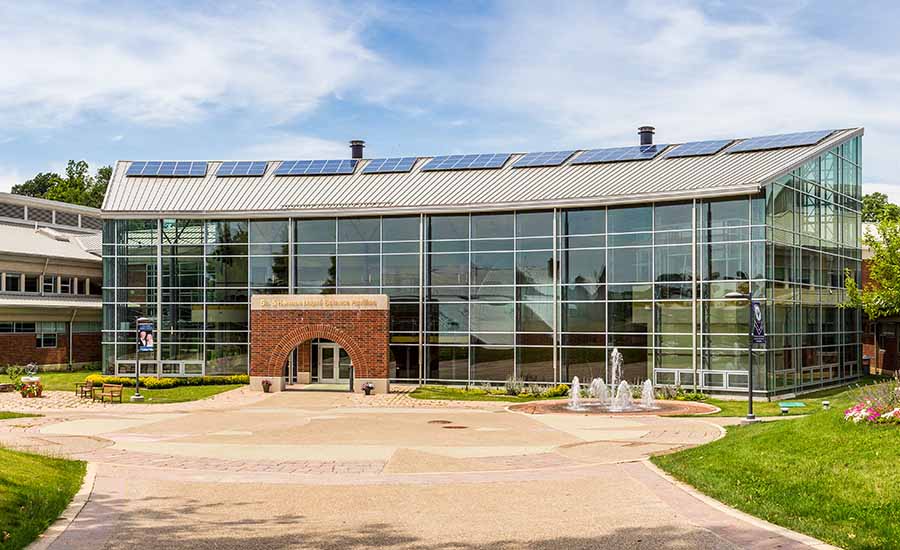Saint Vincent College, located on a 200-acre campus just 40 miles outside of Pittsburgh, places environmental stewardship as a top priority. Central to this belief is energy efficiency and sustainability, which are demonstrated in a recent renovation and construction project which included the 57,000-sq-ft addition to its Sis and Herman Dupré Science Pavilion.
According to Saint Vincent College, the goal for the LEED® gold-certified facility was to make “improvements to the quality of the site, reduce water and energy consumption, and use materials which reduce the impact on the environment whilst providing a healthy and safe place for faculty members and students to work.” One of the unique components of this design is a custom geothermal heating and cooling system.
The facility features a three-story all-glass atrium, solar electrical panels on the atrium roof system, and 225 geothermal wells, providing heating and cooling from the earth. This geothermal system controls the heating and cooling of the building through a loop system, which is buried underground.
According to the project architect, Alan Hohlfelder, “the ground remains a constant 55 degrees, and the system works to draw heat or cold from the building depending on the season.” He adds that the ground then acts as a heat transfer medium and the temperature is regulated through the wells.
The college found that although geothermal systems are often simpler and easier to maintain compared to more conventional systems, sometimes the geothermal systems take longer to transition to a warmer or cooler temperature. This can especially be cumbersome in a climate such as Pennsylvania, where temperature swings are common in the fall and spring.
In 2017, the college will complete an 11,000-sq-ft addition to the science center, the James F. Will Engineering and Biomedical Sciences Hall. The addition will use the existing geothermal system to heat and cool the building. The engineers studied two alternatives to upgrade the cooling side of the system. One was to drill additional wells to expand the capacity of the system on the warmest of days. The other alternative was to install a Motivair MFC dry fluid cooler and DPS pump package to supplement the geothermal system.
A Motivair MFC dry fluid cooler and DPS pump package were selected for the project due to cooling capacity and design flexibility. This system also proved to be less expensive than expanding the well field. The MFC-1400 Vertical Airflow Fluid Cooler provided Saint Vincent with 900 MBH (75 tons) of additional cooling capacity. The DPS consisted of two pumps, controls, and piping specialties, which minimized the piping modifications required in the building and loop. In addition, the pump package was contained in a lit, weather-resistant enclosure for serviceability.
Since footprint was a concern, Motivair offered the client a solution in which the pumps would be directly mounted to the fluid cooler, so it could be packaged as one unit. This eliminated the need for additional space and redundant pipes and connections, which would have been required on two separate units.
According to the college, while the initial cost to build the eco-friendly space may have been high, the payback for the 108,000-sq-ft science center as a whole has been much greater because of the energy savings over the long term. The building has proven to be functional while at the same time adhering to the school’s core value of environmental stewardship.


